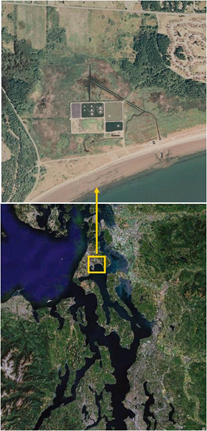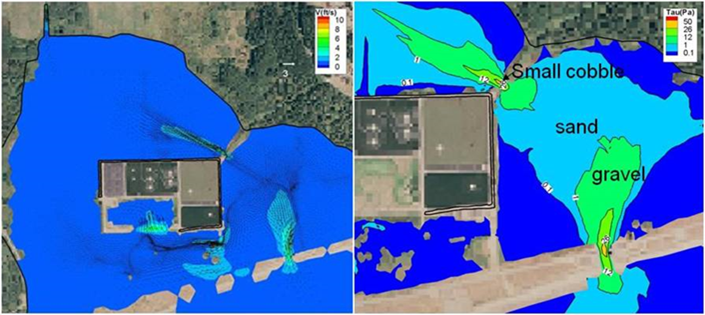SSM Habitat Restoration: Crescent Harbor
Crescent Harbor Restoration Design and Feasibility Assessment

Crescent Harbor salt marsh is a pocket estuary located on the Naval Air Station base on Whidbey Island. The salt marsh was one of the largest open barrier island salt marshes (approximately 300 acres) in the basin. Prior to restoration, it was diked and ditched with minimal tidal exchange through culverts. The Skagit River System Cooperative proposed restoration of this salt marsh for juvenile salmon rearing habitat by providing better fish access to improve tidal exchange. Restoring this salt marsh would require modification of the nearshore environment through actions such as opening a tidal inlet, channel excavation, and replacement of tide gates that currently obstruct the full tidal circulation and limit its functionality as fish habitat.
There was concern that full restoration involving removal of tide gates could cause overflow of water across the dike that protects the wastewater treatment plant (WWTP) operated by the City of Oak Harbor. There was also a strong consensus that the access road would be overtopped as well. The approach was to conduct a hydrodynamic modeling assessment of the proposed restoration alternative to address the above concerns and select an effective design configuration.

PNNL conducted a modeling-based feasibility evaluation of how the Crescent Bay salt marsh might be restored to answer questions related to the feasibility and long-term stability of opening the tidal inlet, excavating tidal channels, installing new culverts, and addressing concerns about overtopping of water across the WWTP levee during storm conditions.
Project Highlights
Hydrodynamic analyses were conducted for 100-year storm conditions to explore the potential impacts of several restoration alternatives. Specific project highlights are as follows.
- The low elevation (~6 ft) of Pioneer Way would likely be inundated by flood tide.
- For the 100-year storm, the south dike of the WWTP, and nearby access roads would be completely flooded.
- Potential scouring at the inlet and opening at northeast dike can occur. These results provided design specification for armoring to prevent the potential erosion due to high velocity during the flooding and ebbing tides.
Contacts and Project Team
- PNNL: Tarang Khangaonkar (CO-PI), Cheegwan Lee(CO-PI)
- Skagit River System Cooperative: Steve Hinton (PI); Eric Mickelson (CO-PI)
Study Reports and Publications
Power Point Presentation - available upon request.